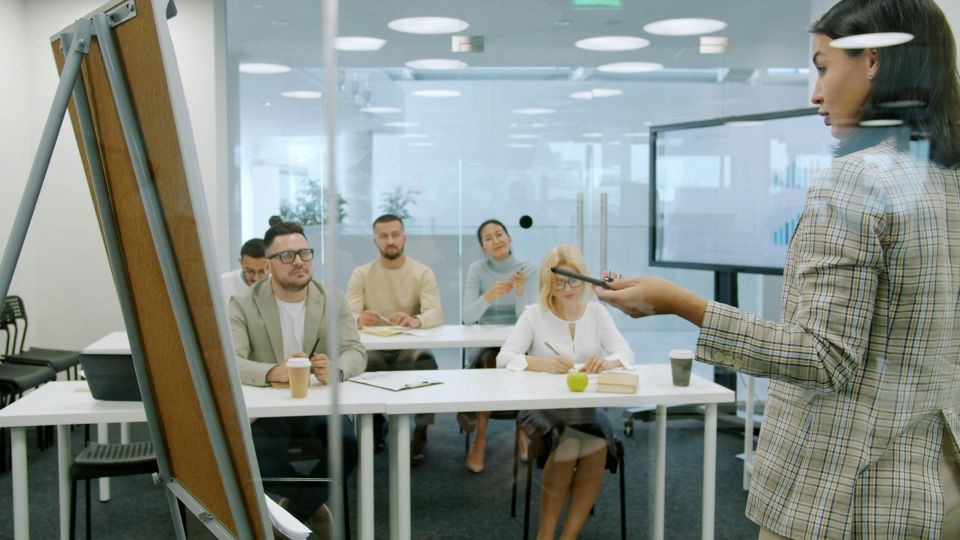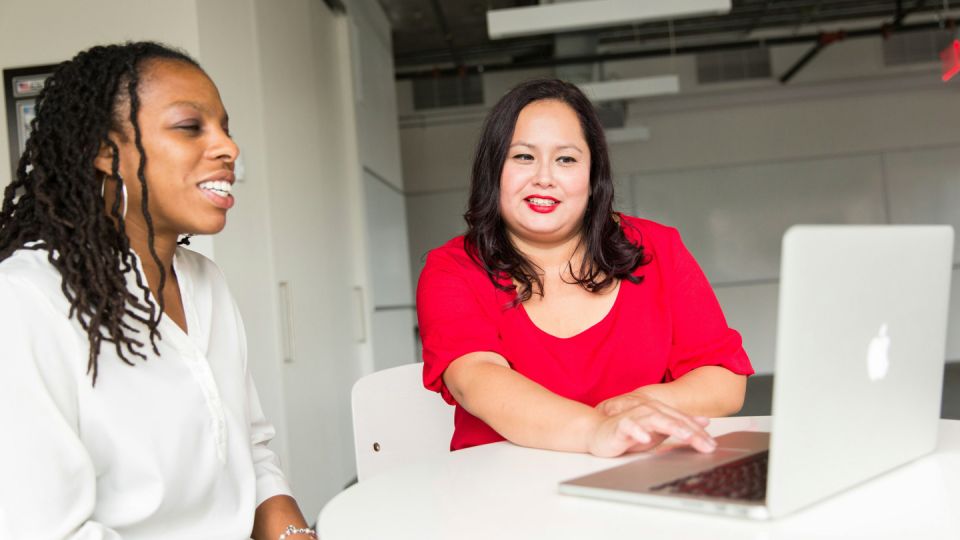

Employee Resource Groups (ERGs)
Employee Resource Groups (ERGs) are voluntary, employee-led collectives designed to create a more inclusive and supportive work environment. These groups usually form around shared identities, experiences, or interests, such as ethnicity, gender, sexual orientation, disability, caregiving responsibilities, or generational identity. But their purpose goes far beyond social connection. At their best, ERGs act as internal champions for change, shaping policies, influencing leadership behaviour, and supporting career development for members and allies alike.
In today’s workplace, ERGs are increasingly recognised as a business asset, not just a cultural add-on. A McKinsey report noted that organisations with active, supported ERGs tend to perform better across key inclusion and engagement metrics. Nearly 90% of Fortune 500 companies now run ERGs, and many UK employers are embedding them into their broader DE&I strategies. Yet for all their value, ERGs need proper structure, sponsorship and integration into the business to have a lasting impact.
This guide is a comprehensive roadmap for UK organisations looking to launch or scale ERGs, offering templates, case studies, and guidance to maximise impact across recruitment, retention and cultural development.
Why ERGs Matter: Benefits for Individuals and Organisations
Benefits for Employees
For employees, ERGs provide something incredibly powerful: visibility and voice. For underrepresented individuals, these groups create spaces where they can speak freely, share experiences, and connect with others who understand their journey. That sense of community is particularly important during career transitions, returning to work, or navigating identity-specific challenges at work.
ERGs also open up development opportunities. Members may lead initiatives, host events, or contribute to policy changes, experiences that often lead to skill development in communication, project management and leadership. Participating in or leading an ERG can boost confidence, elevate a person's profile in the organisation, and open pathways to promotion or cross-functional projects.
Beyond professional growth, ERGs foster psychological safety. When people feel seen and supported, they are more likely to perform well, stay longer, and engage more fully with their work and colleagues.
Benefits for Organisations
For employers, ERGs are a strategic asset. They help surface insights from the frontline that inform smarter, more inclusive decision-making. This can range from adapting recruitment language to influencing return-to-office policies. Because ERGs reflect lived experience, their recommendations often bridge the gap between policy and reality.
Well-run ERGs contribute to higher engagement scores, stronger employer branding and improved talent retention, particularly among staff from underrepresented backgrounds. ERGs also help signal organisational values externally, showcasing inclusion not just as rhetoric but as active practice.
And when ERGs have executive sponsors who advocate for their aims, they help to break down hierarchy and make diversity and inclusion everyone’s responsibility, not just HR’s.
Three Pillars for Successful ERGs
Executive Sponsorship
Without leadership backing, ERGs struggle to move beyond informal peer support. Executive sponsors provide access to decision-makers, reinforce the strategic importance of the group, and secure resources. They also amplify the group’s initiatives, helping them reach and influence a wider internal audience.
Securing executive buy-in starts with a solid business case. Show how the ERG aligns with company priorities: talent retention, culture development, innovation, or market reach. Where possible, include success stories from other firms. For instance, LinkedIn’s decision to compensate ERG leaders sent a strong message of value. The result? ERG engagement soared, and the organisation gained deeper insights from its employee networks.
Sponsors don’t need to belong to the identity group in question. What matters more is their influence, consistency and willingness to learn and champion ERG goals with credibility.
Strong Governance and Clear Structures
ERGs need structure to sustain energy and avoid becoming ad hoc or personality-driven. A formal charter sets expectations: what the group stands for, how it operates, who it includes, and how it links back to the business. This doesn’t mean rigid hierarchy, but it does mean clarity on roles, responsibilities and boundaries.
Leadership roles within ERGs should rotate regularly to build capacity and avoid burnout. Setting expectations around event frequency, budget oversight, and how decisions are made ensures transparency and continuity.
Involving allies is crucial. Including people outside the identity group fosters broader engagement, avoids exclusion, and ensures compliance with UK equality legislation. It also shifts the culture from “us and them” to collective responsibility.
Measuring ERG Impact
To demonstrate the value of ERGs, you need to measure more than participation. Start with engagement metrics: how many people attend events, how many volunteer to lead initiatives, and how frequently the group is active. But don’t stop there.
Track how involvement in ERGs influences retention, internal mobility, or staff satisfaction. Are ERG members more likely to stay or apply for leadership development programmes? Are they influencing new HR policies or business practices?
Use pre- and post-engagement surveys to understand how ERG activity affects belonging, awareness and confidence. And always gather stories. Qualitative feedback often shows impact more vividly than dashboards can.
Step-by-Step ERG Setup Guide
Launching a successful ERG takes more than enthusiasm. It takes structure, support and a phased approach.
Start by identifying where the need is greatest. Use your staff survey data, EDI audit or demographic analysis to highlight groups who may benefit from additional support or visibility. Listen to employees directly. If themes like career barriers, lack of representation or poor psychological safety surface repeatedly, those are strong signals.
Begin small. Pilot with one ERG, perhaps focused on race, gender, or carers. Set clear goals: is the aim peer support, policy influence, or leadership development? Define these with a mix of employee and leadership input.
Formalise your approach with a charter co-written by the ERG leads, HR and an executive sponsor. This document should include the group’s mission, leadership structure, meeting schedule, decision-making processes and inclusion principles.
Next, secure a small but consistent budget. This helps the group plan events, invite guest speakers, or commission materials. Even modest financial support signals that the group’s work is valued.
Design a programme of activity based on real needs. ERG events should be purposeful. For example, a Women’s Network might run career workshops, while a Disability Network may focus on workplace adjustments and accessibility reviews.
Throughout the year, collect data and feedback. Create space to reflect, adapt and improve. Share successes publicly, such as town halls, newsletters, or leadership updates. ERGs should be visible across the organisation.
Once your first ERG is delivering value, expand. Build additional ERGs and connect them under a central inclusion council. This group can coordinate efforts, standardise governance, and provide direct reporting to leadership.
Macildowie provides tools to support this setup, including a sample ERG charter, event checklist and impact dashboard, aligned with our wider Happy Workplace Project.
Templates and Planning Tools
A well-run ERG starts with a solid foundation. Macildowie offers:
An ERG charter template covering purpose, leadership, operations, funding, and success metrics. An event planning guide that takes you through logistics, content, communications, and post-event feedback. An impact dashboard template to help you track progress and justify ongoing investment.
These tools are tailored for UK employment contexts and designed to scale with your organisation as you grow.
Common Pitfalls and How to Avoid Them
A common reason ERGs fail is a lack of senior sponsorship. Without leadership backing, ERGs often rely on a handful of volunteers, who eventually burn out. Another issue is unclear purpose. Without a focused mission, even well-attended groups can lose momentum.
Underfunding is another trap. No group can deliver meaningful activity without basic resources. Finally, a lack of measurement makes it difficult to maintain executive support. If impact isn’t tracked, it’s easy for ERGs to be seen as "nice to have" rather than essential.
Macildowie’s People Strategy Audit helps organisations assess their ERG readiness and build programmes designed to deliver long-term results.
How Macildowie Supports ERGs
We provide hands-on support to help businesses design and run ERGs that make a difference. Our consultants can help draft your charter, coach your executive sponsors, and develop measurement frameworks tied to business goals.
We also offer facilitator training and inclusive leadership development through our Happy Workplace Project, ensuring ERGs have both the tools and culture needed to thrive.
Our approach is always personalised. Whether you’re an SME running your first inclusion network or a larger organisation coordinating multiple ERGs, we tailor our support to your team’s size, goals, and culture.
Conclusion
Employee Resource Groups are more than a DE&I checkbox. When properly supported, they become powerful engines of engagement, development and inclusion.
To get them right, organisations must invest in sponsorship, clarity, structure, and metrics. ERGs should be visible, valued and integrated into broader people strategies.
If you're looking to launch, scale or re-energise your ERGs, Macildowie brings the frameworks, experience and practical tools to make it happen.
Frequently Asked Questions
Anyone. While many ERGs are built around shared identities, they are always open to allies. This supports inclusion and ensures compliance with UK equality legislation.
Start with one or two. Focus on quality over quantity. As momentum and impact grow, expand your network.
Within 6–12 months. With sponsorship, planning and measurement, most ERGs deliver meaningful engagement and policy influence within their first year.









